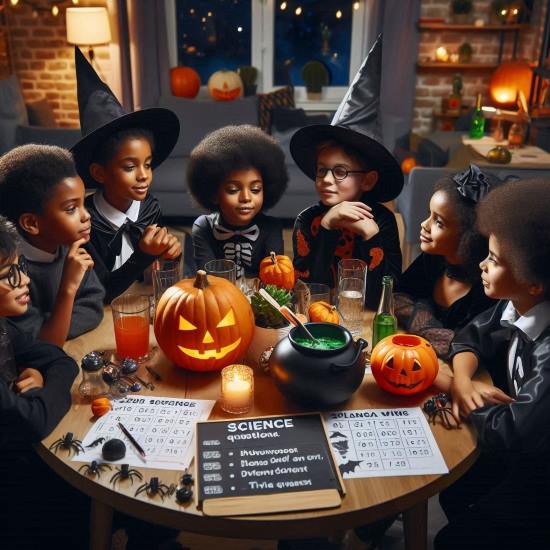Here are some surprising facts about Halloween!
RNfinity | Published 27-10-2024
| Updated 04-01-2025
Halloween is upon us once again, and it only seems
to grow each year. Shops are stacked with costumes and pumpkins, though by
November 1st, these will quickly make way for Christmas goods. Soon, pigs in
blankets and turkey-and-cranberry sandwiches will start hitting the shelves.
Until then, orange and black, with a smattering of white cobwebs and ghoulish
decorations, will prevail. Oh, and did you know these fun Halloween trivia
facts? 🎃
1. Halloween’s Roots Are Over 2,000 Years Old
- Halloween traces back
to the ancient Celtic festival of Samhain, celebrated on October 31. The
Celts believed that on this night, the boundary between the worlds of the
living and the dead blurred.
2. "Trick-or-Treating" Comes from a
Tradition Called "Souling"
- During the Middle Ages,
"souling" involved children and poor people going door-to-door
asking for "soul cakes," a small pastry, in exchange for praying
for the homeowners’ deceased relatives.
3.Black and Orange Aren't Just for Style
- Black represents death
and darkness, while orange signifies the autumn harvest. Together, they
perfectly capture the essence of Halloween.
4. Candy Corn Was Originally Called "Chicken
Feed"
- Introduced in the
1880s, candy corn was marketed as "Chicken Feed," appealing to
farmers and their families.
5. The World’s Heaviest Pumpkin Was Over 2,600
Pounds
- The current record is
held by a pumpkin from Italy, weighing a whopping 2,702 pounds as of 2021!
6. Halloween Was Once More About Love Than Fear
- In the 19th century,
Halloween had traditions focused on romantic fortune-telling. For example,
young women might try to see their future husband’s face in a mirror or
apple.
7. Jack-o'-Lanterns Were Originally Carved from
Turnips, Not Pumpkins
- In Ireland and
Scotland, people carved creepy faces into turnips and potatoes. When Irish
immigrants came to the U.S., they found that pumpkins were easier to
carve.
8. Pumpkin Carving Ties Back to the Legend of
"Stingy Jack"
- The tradition comes
from an Irish folktale about Stingy Jack, who tricked the Devil and was
cursed to wander Earth with only a carved-out turnip to light his way.
9. Halloween Is the Second-Highest Grossing
Commercial Holiday in the U.S.
- After Christmas,
Halloween generates more revenue than any other holiday, largely due to
costumes, decorations, and candy sales.
10. In Some Countries, It's Illegal to Wear Masks
on Halloween
- In places like Dublin,
Georgia, and parts of Canada, it's against the law to wear a mask in
public on Halloween, mainly for safety and anti-crime reasons.
11. Harry Houdini Died on Halloween
- The famous illusionist
and escape artist died on October 31, 1926, after complications from a
ruptured appendix.
12. Bobbing for Apples Was Once a Matchmaking
Tradition
- This was a
fortune-telling game where apples were marked with the names of suitors.
The first person to successfully bob for an apple would supposedly marry
the person it represented.
13. Michigan and Ohio Are Major Pumpkin Producers
- Illinois produces the
most pumpkins in the U.S., but Michigan and Ohio grow impressive amounts
too. Together, they make up much of the country’s pumpkin supply.
14. Candy Corn Hasn’t Changed in Over a Century
- The recipe for candy
corn has remained nearly the same since it was invented in the 1880s.
15. Some Halloween Traditions Are Still Widely
Practiced Only in Certain Countries
- In Germany, people put
away their knives on Halloween night to avoid accidentally harming or
angering returning spirits.
16. Mischief Night Precedes Halloween in Some Areas
- October 30 is known as
Mischief Night in some places, a night dedicated to harmless pranks like
toilet-papering houses or playing other tricks on neighbors.
17. Fear of Halloween Is Called
"Samhainophobia"
- Named after Samhain,
the original Celtic festival, "samhainophobia" is the irrational
fear of Halloween.
18. Since 1950
there are 258 academic articles which contain Halloween in the title on PubMed.
·
The peak year was
2021. One study from Canada published in Canada found there was a statistically
significant 13% increase in the rate of heart attacks on Halloween compared to
other days in October November (1). On the contrary another study found there “was no significant difference in
relative risk for most conditions, like vehicle accidents, accidental poisoning
and drowning, and adverse drug effects, during the Halloween season, when
compared to the statistical expectation.” (2) Other studies unfortunately have found an increased risk of motor vehicle
accidents in the UK (additional 34% relative risk) (3) and the United States (additional 43% relative risk) (4). So everyone please take
care and enjoy the festivities.
References
1) Halloween and myocardial infarction: A case-crossover study
2) Risk of preventable injuries associated with Halloween
3) Pediatric Traffic Injuries on Halloween in the United Kingdom: Prevalence and Injury Severity
4) Pedestrian Fatalities Associated With Halloween in the United States
